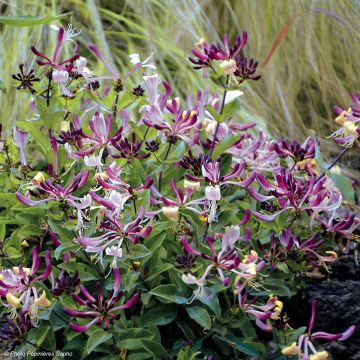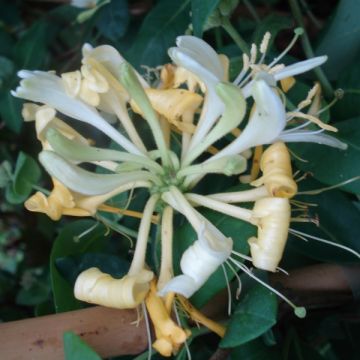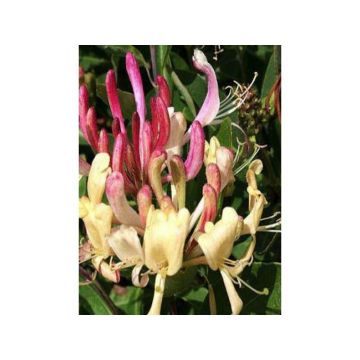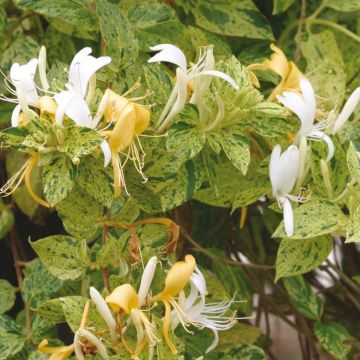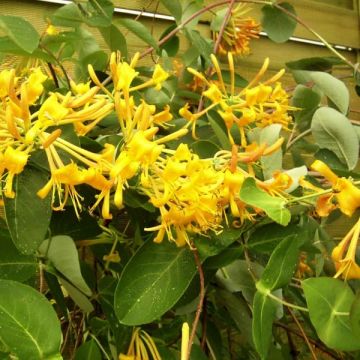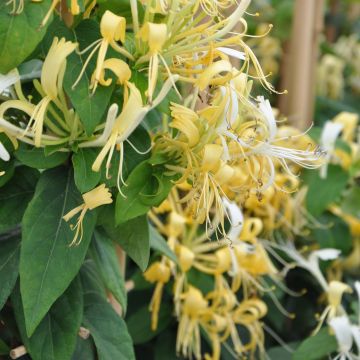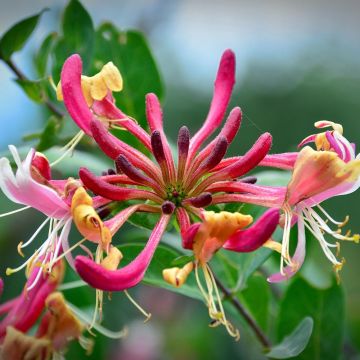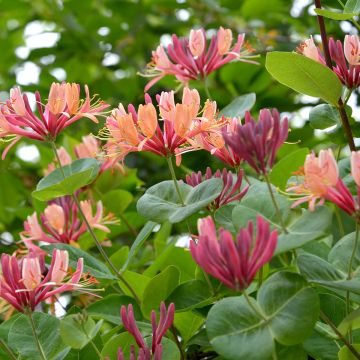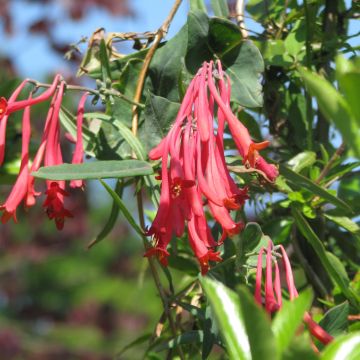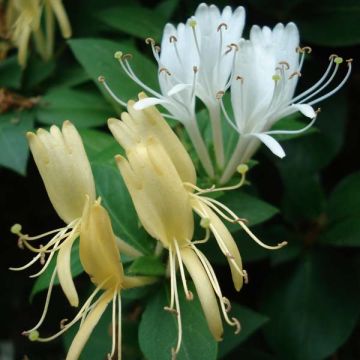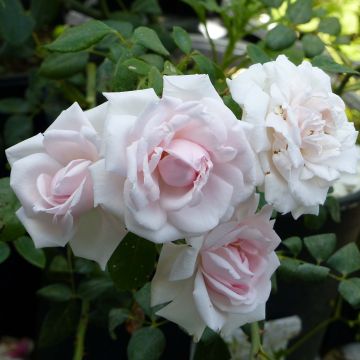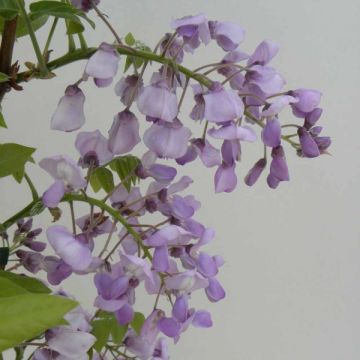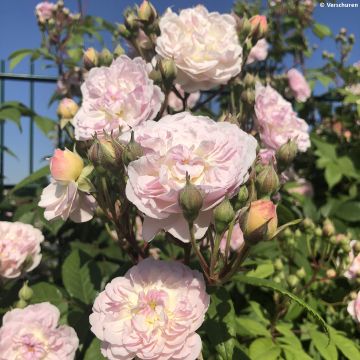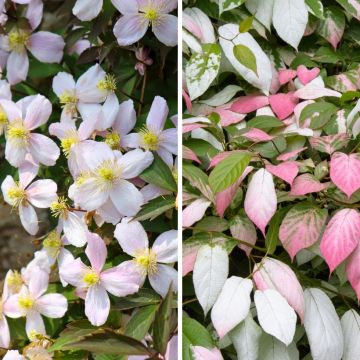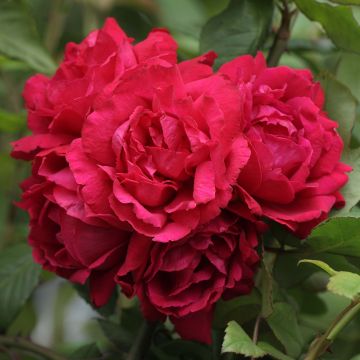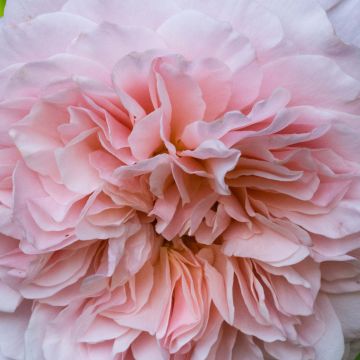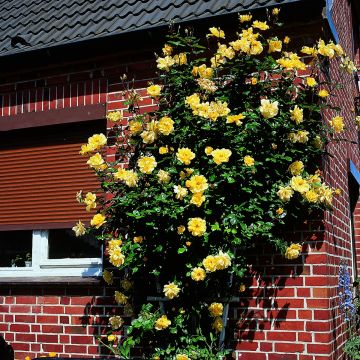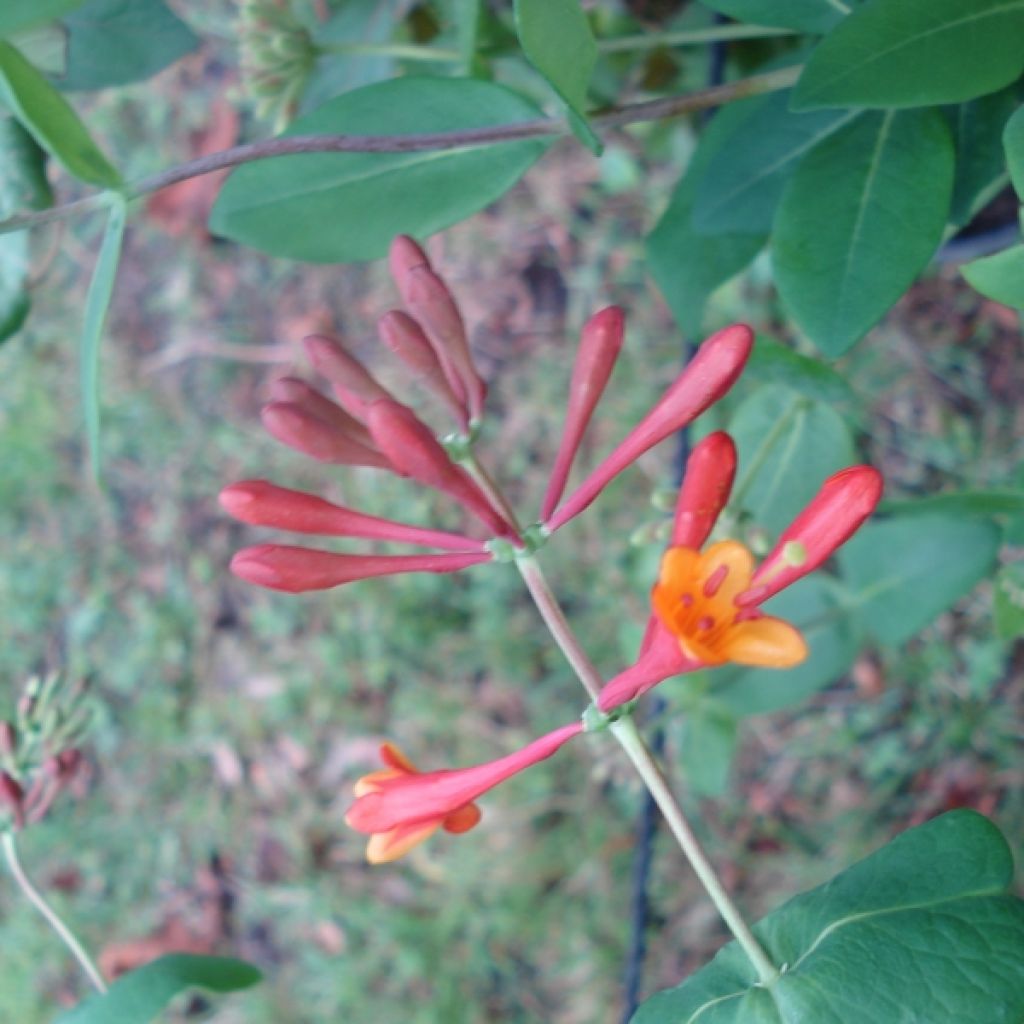

Lonicera x brownii Dropmore Scarlet
Lonicera x brownii Dropmore Scarlet
Lonicera x brownii Dropmore Scarlet
Scarlet Trumpet Honeysuckle, Brown's Honeysuckle
This item cannot be shipped to the selected country
Delivery charge from €5.90
Delivery charge from €5.90
Delivery to Corse prohibited
More information
Schedule delivery date,
and select date in basket
This plant carries a 6 months recovery warranty
More information
We guarantee the quality of our plants for a full growing cycle, and will replace at our expense any plant that fails to recover under normal climatic and planting conditions.
From €5.90 for pickup delivery and €6.90 for home delivery
Express home delivery from €8.90.
From €5.90 for pickup delivery and €6.90 for home delivery
Express home delivery from €8.90.
Delivery to Corse prohibited: UE law prohibits the import of this plant from mainland France to Corse as part of the fight against Xylella fastidiosa. Please accept our sincere apologies.
More information
Does this plant fit my garden?
Set up your Plantfit profile →
Description
This climbing honeysuckle or Lonicera (x) brownii Dropmore Scarlet is a famous hybrid variety appreciated for its vigorous growth and perpetual summer flowering, in tight clusters of slender tubular flowers in a scarlet orange-red colour, which stands out beautifully against its blue-green foliage. The almost absence of fragrance in the flowers is largely compensated by their warm and invigorating hue! Perfect colours to brighten up the semi-shade where this climbing plant particularly thrives.
The Brown Dropmore Scarlet honeysuckle belongs to the Caprifoliaceae family. It is a Canadian horticultural creation dating back to before 1950, credited to F.L. Skinner. It is a woody and climbing plant, with voluble stems that twine around any available support. Its growth is quite fast, reaching about 3.50m (11ft) in length or height and 2.50m (8ft) in width, sometimes more depending on the growing conditions. Its foliage will persist during mild winters, but it will be deciduous in colder regions. It consists of elliptical, slightly leathery leaves, measuring 4 to 5cm (2in) in length, with a blue-green colour, arranged in an opposite manner on the stems. Flowering occurs in two distinct waves; it is abundant in June-July, then reappears in September-October. It takes the form of clusters composed of numerous tubular flowers with 5 lobes, measuring 3 to 5cm (1 to 2in) in length, from which long stamens and a very elongated pistil emerge. Their colour ranges from scarlet red to bright orange, with a yellowish interior. They are primarily pollinated by night-flying moths. The flowers are followed by small green berries, then red berries, turning black-blue when ripe, sought after by birds but toxic to humans.
The Dropmore Scarlet honeysuckle looks superb trained on a trellis or wooden fence, combined with a climbing rose with white or light yellow flowers on a pergola, or planted behind trimmed boxwood hedges. It also fits perfectly in a slightly wild hedge, with easy-to-maintain shrubs such as bush honeysuckles, botanical roses (Rosa moyesii, R. complicata, R. hugonis), or viburnums (snowball, wayfaring tree). It is also possible to train it as a large bush, by regular pruning in late winter.
Report an error about the product description
Lonicera x brownii Dropmore Scarlet in pictures
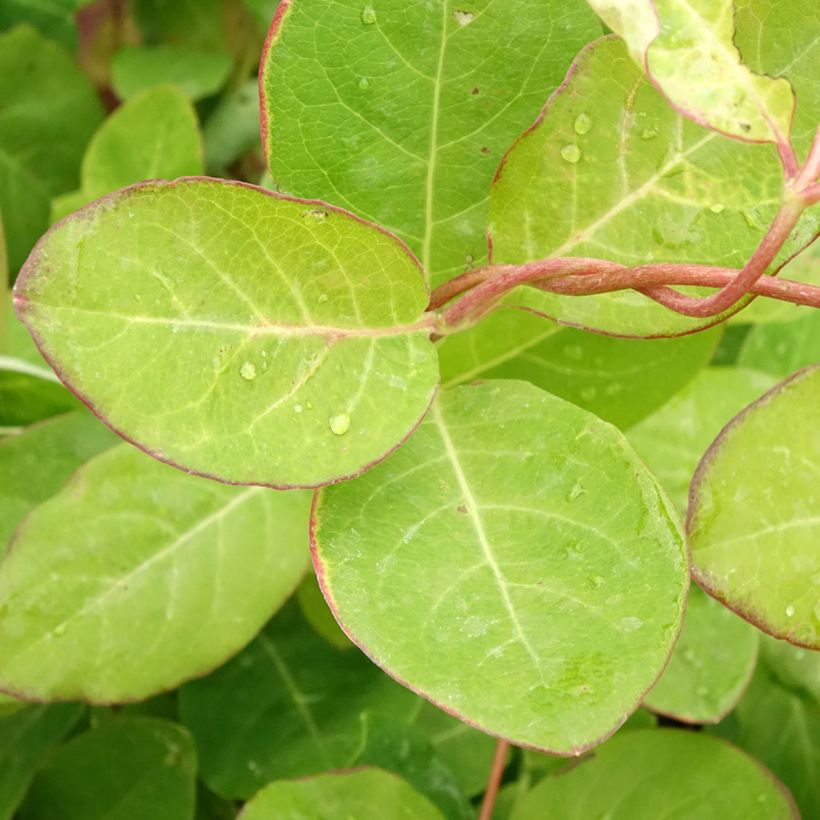

Plant habit
Flowering
Foliage
Botanical data
Lonicera
x brownii
Dropmore Scarlet
Caprifoliaceae
Scarlet Trumpet Honeysuckle, Brown's Honeysuckle
Cultivar or hybrid
Other Honeysuckle
Planting and care
Honeysuckles thrive in any good deep, loose garden soil, generally low in surface lime, and in gently sunny exposure. The Dropmore Scarlet hybrid tolerates the presence of lime in the soil. Practice annual pruning to keep the plant clean. However, it is possible to severely cut back an older subject to completely renew its structure. This restoration can be done over one or two years. Honeysuckles are hardy climbing plants ideal for quickly dressing a wall or arbor. Provide them with support, they will cling on their own. We love them for their long flowering period and wonderful fragrance. Our advice: plant them near your terrace to fully enjoy their intoxicating scent, which intensifies in the morning and evening. Their enemies are aphids, which can be eliminated with pyrethrin, as well as powdery mildew. To reduce the risk of disease, it is useful to properly ventilate the branches of the honeysuckle and place it in an open location. Preventive or curative treatments with Bordeaux mixture are effective.
Planting period
Intended location
Care
-
, onOrder confirmed
Reply from on Promesse de fleurs
Foolproof climbers
Haven't found what you were looking for?
Hardiness is the lowest winter temperature a plant can endure without suffering serious damage or even dying. However, hardiness is affected by location (a sheltered area, such as a patio), protection (winter cover) and soil type (hardiness is improved by well-drained soil).

Photo Sharing Terms & Conditions
In order to encourage gardeners to interact and share their experiences, Promesse de fleurs offers various media enabling content to be uploaded onto its Site - in particular via the ‘Photo sharing’ module.
The User agrees to refrain from:
- Posting any content that is illegal, prejudicial, insulting, racist, inciteful to hatred, revisionist, contrary to public decency, that infringes on privacy or on the privacy rights of third parties, in particular the publicity rights of persons and goods, intellectual property rights, or the right to privacy.
- Submitting content on behalf of a third party;
- Impersonate the identity of a third party and/or publish any personal information about a third party;
In general, the User undertakes to refrain from any unethical behaviour.
All Content (in particular text, comments, files, images, photos, videos, creative works, etc.), which may be subject to property or intellectual property rights, image or other private rights, shall remain the property of the User, subject to the limited rights granted by the terms of the licence granted by Promesse de fleurs as stated below. Users are at liberty to publish or not to publish such Content on the Site, notably via the ‘Photo Sharing’ facility, and accept that this Content shall be made public and freely accessible, notably on the Internet.
Users further acknowledge, undertake to have ,and guarantee that they hold all necessary rights and permissions to publish such material on the Site, in particular with regard to the legislation in force pertaining to any privacy, property, intellectual property, image, or contractual rights, or rights of any other nature. By publishing such Content on the Site, Users acknowledge accepting full liability as publishers of the Content within the meaning of the law, and grant Promesse de fleurs, free of charge, an inclusive, worldwide licence for the said Content for the entire duration of its publication, including all reproduction, representation, up/downloading, displaying, performing, transmission, and storage rights.
Users also grant permission for their name to be linked to the Content and accept that this link may not always be made available.
By engaging in posting material, Users consent to their Content becoming automatically accessible on the Internet, in particular on other sites and/or blogs and/or web pages of the Promesse de fleurs site, including in particular social pages and the Promesse de fleurs catalogue.
Users may secure the removal of entrusted content free of charge by issuing a simple request via our contact form.
The flowering period indicated on our website applies to countries and regions located in USDA zone 8 (France, the United Kingdom, Ireland, the Netherlands, etc.)
It will vary according to where you live:
- In zones 9 to 10 (Italy, Spain, Greece, etc.), flowering will occur about 2 to 4 weeks earlier.
- In zones 6 to 7 (Germany, Poland, Slovenia, and lower mountainous regions), flowering will be delayed by 2 to 3 weeks.
- In zone 5 (Central Europe, Scandinavia), blooming will be delayed by 3 to 5 weeks.
In temperate climates, pruning of spring-flowering shrubs (forsythia, spireas, etc.) should be done just after flowering.
Pruning of summer-flowering shrubs (Indian Lilac, Perovskia, etc.) can be done in winter or spring.
In cold regions as well as with frost-sensitive plants, avoid pruning too early when severe frosts may still occur.
The planting period indicated on our website applies to countries and regions located in USDA zone 8 (France, United Kingdom, Ireland, Netherlands).
It will vary according to where you live:
- In Mediterranean zones (Marseille, Madrid, Milan, etc.), autumn and winter are the best planting periods.
- In continental zones (Strasbourg, Munich, Vienna, etc.), delay planting by 2 to 3 weeks in spring and bring it forward by 2 to 4 weeks in autumn.
- In mountainous regions (the Alps, Pyrenees, Carpathians, etc.), it is best to plant in late spring (May-June) or late summer (August-September).
The harvesting period indicated on our website applies to countries and regions in USDA zone 8 (France, England, Ireland, the Netherlands).
In colder areas (Scandinavia, Poland, Austria...) fruit and vegetable harvests are likely to be delayed by 3-4 weeks.
In warmer areas (Italy, Spain, Greece, etc.), harvesting will probably take place earlier, depending on weather conditions.
The sowing periods indicated on our website apply to countries and regions within USDA Zone 8 (France, UK, Ireland, Netherlands).
In colder areas (Scandinavia, Poland, Austria...), delay any outdoor sowing by 3-4 weeks, or sow under glass.
In warmer climes (Italy, Spain, Greece, etc.), bring outdoor sowing forward by a few weeks.

































